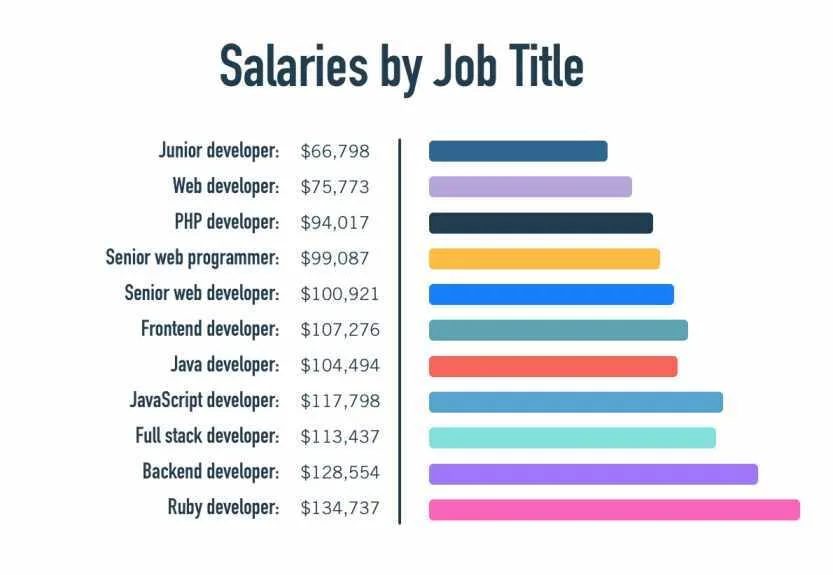The Australian web development industry is a growing and vital industry
The web development industry in Australia is a booming sector. It involves a lot of work, from developing simple static pages to complex web applications, electronic businesses, and social network services. The job demands a wide range of skills, from a passion for computers to a solid understanding of software.
Below is a look at the scope of this industry. It may be just the right career for you. It will be a rewarding career for those with a knack for creativity.
Web Development Defined
Web development is a term for the work involved in developing a website for the internet (World Wide Web) or an intranet (private network). This can include web design, web content development, client-side/server-side scripting, web server and network security configuration, and e-commerce development. However, among web professionals, “web development” usually refers to the main non-design aspects of building websites: mark-up, writing and coding.
Web development can range from developing the simplest static single page in plain text to the most complex web applications on the Internet, e-business (e-commerce) or social media.
Next Generation of Web Development
The next generation of web development is supported by tools that leverage strong growth. LAMP, Java Platform, Enterprise Edition technologies, and Microsoft .NET technologies are some examples that provide the web as a way to run applications online. Web developers now help deliver applications as web services that were traditionally only available as applications on a desktop computer.
A web developer can work in many different roles. A front-end developer focuses on the website’s appearance and functionality. A front-end developer may be responsible for making the site look more appealing to online users. A front-end developer will also look for ways to improve SEO. They may also optimise a website for mobile devices.
They may also be responsible for developing new tools that help users interact with the content on a website. A back-end developer is a programmer who manages the servers of a website and maintains its data. They may be called on to troubleshoot and maintain applications.
Front End vs Backend Web Developers
Among the main types of web developers, there are front-end developers and back-end developers. Front-end developers focus on the visual aspect of a website. They improve the user experience on websites and try to make them more search engine friendly.
They may also optimise the website for mobile devices or add new features to make it more interactive. Back-end developers are responsible for managing a website’s server on a daily basis. They may also troubleshoot applications and stay updated on emerging technologies.
The Australian web development industry is a growing and vital industry. Increasing internet usage has made it essential for businesses to adapt to the demands of online consumers. They must learn how to digitise their operations to meet these new demands.
With the help of web development, businesses and individuals can reach a wide range of new audiences and customers. These people are the backbone of the entire industry and must be a part of it. They must keep up with the latest technologies and frameworks to stay competitive.
Fortunately, the web development industry is one of the fastest-growing sectors in the world today. With the rise of smartphones and the popularity of the internet, more people are connecting with the online world and making purchases.
The web development industry offers a variety of services to help businesses and individuals reach their audience. The internet is a huge and growing market. Moreover, the web development industry can help you grow your business. The growth of the internet has paved the way for the evolution of your company.
With the rise of social media, the web development industry has moved into a new phase. Instead of a computer website that merely contains information and products, users can now interact with the content in real-time.
The front-end developers work on the front-end of a website, while the back-end developers focus on the back-end. The front-end developers work on the design, and the back-ends maintain and improve the content.
The web development industry is one of the most dynamic industries. Whether you’re a beginner or an experienced professional, you’ll never get bored. The web development industry is constantly evolving and new advances are made daily. Therefore, you should never be bored in this industry. It is a highly-competitive industry.
The more you learn, the better. This is a great industry to be in. The benefits of a web developer’s job are obvious.
Web Development Jobs In Australia
Employment opportunities in this area are estimated to increase by 20.5% in 2023. The average weekly wage for web developers in Australia is around A $ 1,600, while the average annual salary is between A $ 36,000 and A $74,500.
Job Outlook
According to the Australian Bureau of Statistics employment of web developers and digital designers is expected to grow 13 percent from 2020 to 2030, faster than the average for all occupations

The highest concentration of job opportunities can be found in Victoria, where there are nearly 40 percent of web developers. The most common industry sector is education and training, where there are only ten percent of web developers.
Recent reports indicate there are around 8,600 web developers employed throughout Australia. The average working time for these professionals is around 42 hours per week.
Amount of web developers globally
In 2020, records indicate a total of 26.2 million web developers in the world. By 2023, that number is expected to reach 27.7 million. Now, in 2021, there are approximately 1 billion active websites on the internet and only 26.3 million web developers
While the demand for web developers in Australia is high, there are other opportunities as well. If you have a passion for technology, you can consider becoming a developer for a major tech company.
The best companies are always looking for talented Graduates who have strong skills in HTML, PHP, and other emerging technologies. You can also get a job as an intern in a leading IT company. Hundreds of web developers have landed jobs in Australia through this program.
Web Development Tasks
- Analyses, designs and develops internet sites applying a mixture of artistry and creativity with software programming and scripting languages and interfacing with operating environments.
- Communicates with network specialists regarding web-related issues, such as security and hosting web sites, to control and enforce internet and web server security, space allocation, user access, business continuity, web site backup and disaster recovery planning.
- Designs, develops and integrates computer code with other specialised inputs, such as image files, audio files and scripting languages, to produce, maintain and support web sites.
- Assists in analysing, specifying and developing internet strategies, web-based methodologies and development plans
In addition, coding and mobile app developers can earn from a wide variety of businesses. Many of these companies seek new ways to engage with consumers through mobile devices. Some of these companies are investing in AI-enabled assistants and chat bots.
Developing mobile apps will boost the value of any web developer. If you are interested in a career in the field of web development, it will help to know where to look for jobs in the industry.
The skills needed to be a web developer include:
- PHP
- MySQL
- Python
- JavaScript
- HTML.
- CSS.
- JavaScript.
- Tools.
- Debugging. 10..GIT (Code Versioning)
- Basic graphic design.
- Back end and Databases.
In Australia, there are many options available for this field. For those who want to learn coding, an education in web development can be an invaluable asset.
The rise of content management systems
A content management system (CMS) is a web application that organises content and serves it to viewers. It is a program that enables website owners and publishers to control and manage their content. It is a flexible tool that allows users to modify content on the fly. This technology is available for free.
Some of the best CMS solutions are cloud-based, so users can access them from anywhere and anytime. They typically also have indexing features that allow users to search and retrieve content, and can track changes to content.
The rise of content management systems has changed the way businesses build their websites. Most content management systems allow for advanced scheduling, down to the second.
This makes the process of creating and managing content on a website easy for all users. Moreover, content management systems make it easy to delegate the creation of website content.
A CMS can help your business save time by automating the content on your website. It can also simplify the administrative process of running a business.
3 Common Content Management Systems :
- WordPress
- Joomla
- Drupal
Despite their recent popularity, content management systems aren’t new. They have helped shape and develop our communication systems.
From music to blogging, from online shopping to advertising, content management systems are an essential part of our daily lives. And they’ve reached every level of society. And the future looks bright. By utilising a CMS, you’re making your business better. The growth of digital communication has become exponential.
Content management systems have become an integral part of the online world. The rise of content management systems is unstoppable, and the benefits are numerous. It allows for extreme customisation of site design, content processing, and integration.
This is beneficial for any business, and has the potential to increase revenue. However, some companies find that a CMS is not the right solution for them
15 Web Development and Design Statistics 2021
- 94% of people judge websites on responsive design.
- 73% of ecommerce sales will take place on a mobile device.
- Cutting down your website load speed from 8 to 2 seconds can boost your conversion rate by up to 74%
- Users spend an average of 0.05 seconds on deciding whether to stay on your site or leave.
- Your website has 10 or fewer seconds to leave an impression on users.
- Google has indicated that website speed is one of the signals used by its algorithms to rank pages
- 47% of people expect websites to load in 2 seconds or less.
- 82% of customers trust a company after reading customer content.
- 68% of consumers say they have higher expectations for businesses’ digital capabilities since COVID-19.
- Design has a 75% influence on a website’s credibility
- Websites that load slowly lead to a $2.6 billion loss in revenue every year.
- Users spend an average of 5.94 seconds looking at a website’s main image.
- 88% of online consumers will not return to a website following a bad experience.
- Most users prefer accessing the internet with their mobile devices
- 54% of users prefer personal online experiences
Web development and design industry statistics give developers a roadmap to build a stronger internet presence. This inevitably translates into more sales and greater business success. Australian web development professionals take these statistics into consideration.







